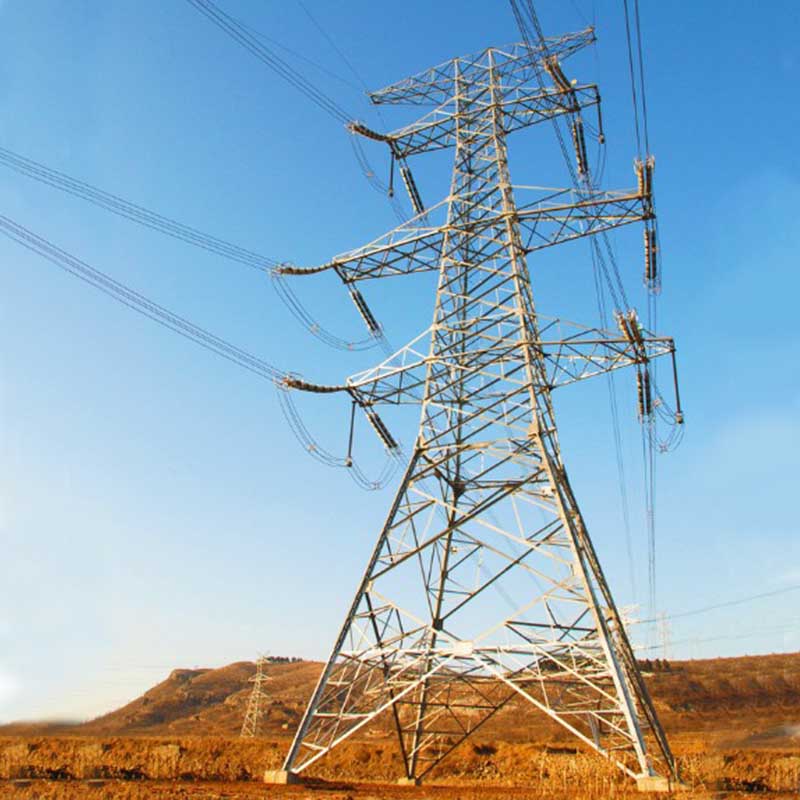Ensuring Long-Term Performance and Safety: Maintenance Requirements for Galvanized Steel Structure Power Towers
2024-04-10
Introduction:
Galvanized steel structure power towers serve as the backbone of electricity transmission networks, facilitating the reliable delivery of power over long distances. To ensure their continued performance and safety, these towering structures require regular maintenance and upkeep. In this blog, we will delve into the specific maintenance requirements essential for maximizing the lifespan and safety of galvanized steel structure power towers.
1. Inspection and Monitoring:
Regular inspections are paramount for detecting any signs of wear, corrosion, or structural damage. Qualified personnel should conduct visual inspections as well as non-destructive testing techniques like ultrasonic testing to identify potential issues early on. Monitoring systems can also be installed to continuously assess the structural integrity and environmental conditions affecting the towers.
2. Corrosion Protection:
Galvanized steel structures are inherently resistant to corrosion due to the zinc coating applied to their surfaces. However, exposure to harsh environmental conditions over time can lead to corrosion and deterioration. Regular cleaning to remove dirt, debris, and pollutants, along with periodic repainting or recoating of the zinc layer, helps maintain the protective barrier against corrosion. Any areas showing signs of corrosion should be promptly addressed to prevent further degradation.
3. Foundation Maintenance:
The stability and integrity of the tower's foundation are crucial for its overall safety and performance. Regular inspections of the foundation, including soil conditions and anchoring systems, should be conducted to identify any signs of settlement, erosion, or structural damage. Repairs or reinforcement may be necessary to ensure the foundation can support the weight and loads imposed on the tower.
4. Structural Repairs and Reinforcement:
Over time, structural components of galvanized steel power towers may experience fatigue, deformation, or damage due to various factors such as wind, ice, or seismic activity. Prompt repair of any structural defects, such as bent or cracked members, loose connections, or damaged hardware, is essential to maintain the structural integrity of the tower. Reinforcement measures, such as adding additional braces or stiffeners, may also be implemented to enhance the strength and stability of the structure.
5. Vegetation Management:
Vegetation growth around power towers can pose a risk of interference with electrical conductors and compromise safety. Regular vegetation management, including trimming trees and shrubs near the towers, helps prevent contact with power lines and reduces the risk of outages or accidents caused by vegetation-induced faults.
6. Compliance with Regulatory Standards:
Adherence to industry standards and regulatory requirements is imperative for ensuring the safety and reliability of galvanized steel structure power towers. Regular audits and assessments should be conducted to verify compliance with applicable codes, standards, and guidelines governing the design, construction, and maintenance of power transmission infrastructure.
Conclusion:
Proper maintenance of galvanized steel structure power towers is essential for ensuring their long-term performance, reliability, and safety. By implementing a comprehensive maintenance program that includes regular inspections, corrosion protection, foundation maintenance, structural repairs, vegetation management, and compliance with regulatory standards, stakeholders can mitigate risks, extend the lifespan of the towers, and uphold the integrity of the power transmission network. Investing in proactive maintenance measures ultimately pays dividends in terms of uninterrupted power supply, reduced downtime, and enhanced public safety.



